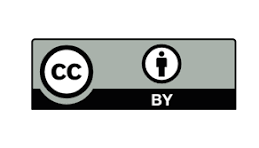SELEÇÃO DE ESTIRPES FÚNGICAS PARA REMOÇÃO DE MERCÚRIO
Palavras-chave:
Mercúrio, Fungos Filamentosos, Biossorção, Mercury, Filamentous Fungi, BiosorptionResumo
Sabe-se que os metais pesados, em especial o mercúrio, constituem um problema para o meio ambiente por causa da sua longa permanência e mobilidade. Além disso, o mercúrio é um elemento tóxico que provoca muitos problemas de saúde nos seres humanos podendo ser fatal. A sua disseminação nos corpos d’água acaba afetando a flora e a fauna, e apesar de haver uma contaminação natural de mercúrio causado pelas emanações gasosas, a contribuição antropogênica se dá principalmente a partir das indústrias de soda-cloro, minero-metalúrgica, eletrônica e de geração de energia a partir de combustíveis fósseis. O presente trabalho se propôs avaliar o potencial de 10 estirpes de fungos filamentosos dos gêneros Aspergillus e Penicillium, visando investigar qual apresentava maior resistência ao mercúrio e, portanto, ser um potencial agente biorremediador deste metal. Os microrganismos foram cultivados em placas de Petri em meio Batata Dextrose Agar (BDA), enriquecido com íons mercúricos. As duas estirpes que apresentaram crescimento nas referidas placas foram Aspergillus flavus IOC 05 e Aspergillus flavus IOC 4133 tendo diâmetros de crescimento de 1 e 3 cm, respectivamente. Na seguinte etapa do estudo foram realizados testes em meio de cultura líquido que continha 7,39 mg de Hg2+/L, empregando A.
Abstract
It is known that heavy metals, especially mercury, are a problem for the environment because of their long permanence and mobility. Besides, mercury is a toxic element that causes many health problems in humans and can even lead to death. Its dissemination in water bodies ends up affecting flora and fauna. Although there is a natural contamination of mercury caused by gaseous fumes, the anthropogenic contribution occurs mainly from the soda-chlorine, mining-metallurgical, electronic industries, and energy generation from fossil fuels. The present work aimed to evaluate the potential of 10 strains of filamentous fungi of the genera Aspergillus and Penicillium, aiming to investigate which presented more excellent resistance to mercury and, therefore, be a potential bioremediation agent of this metal. The microorganisms were grown in Petri dishes in Potato Dextrose Agar (BDA), enriched with mercury ions. The two strains that showed growth on the said plates were Aspergillus flavus IOC 05 and Aspergillus flavus IOC 4133, which presented growth diameters of 1 and 3 cm. In the next stage of the study, tests were performed in a liquid culture medium containing 7.39 mg of Hg2+/L, using A. flavus IOC 4133. The result obtained indicated a 17.05% mercury removal.
Downloads
Downloads
Publicado
Como Citar
Edição
Seção
Licença
Copyright (c) 2020 Episteme Transversalis

Este trabalho está licenciado sob uma licença Creative Commons Attribution-NonCommercial 4.0 International License.
Revista Episteme Transversalis © 2010 por Centro Universitário Geraldo Di Biase está licenciada sob Creative Commons Atribuição 4.0 Internacional. Para visualizar uma cópia desta licença, visite https://creativecommons.org/licenses/by/4.0/













